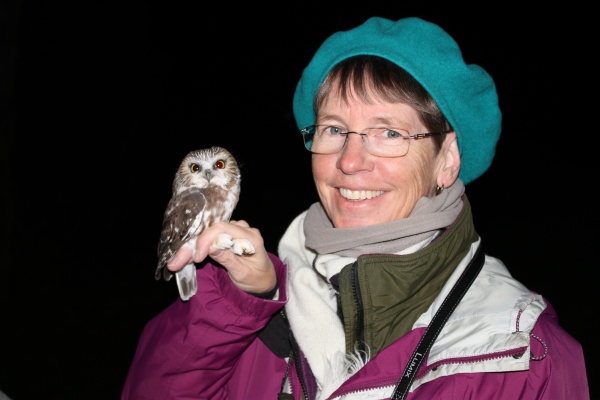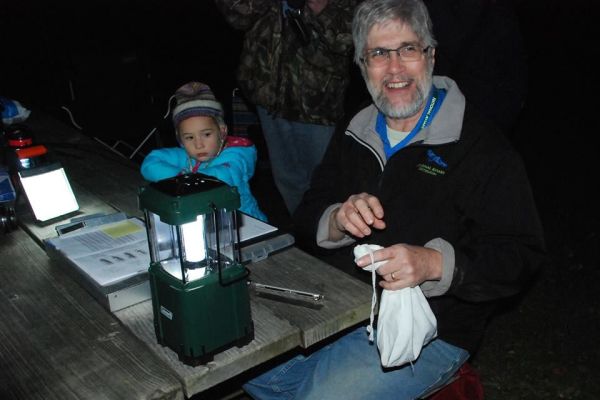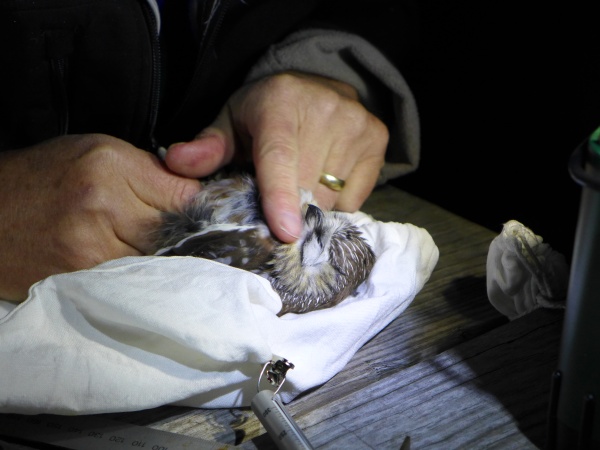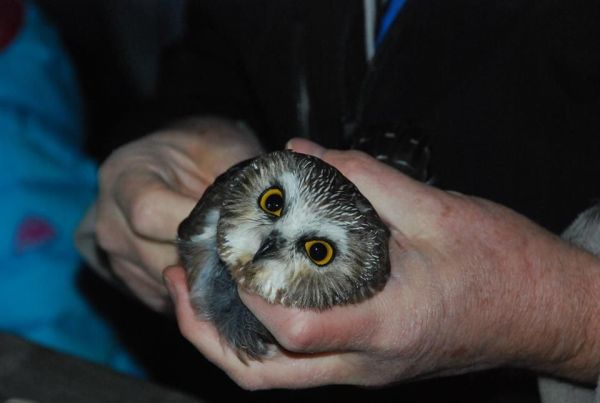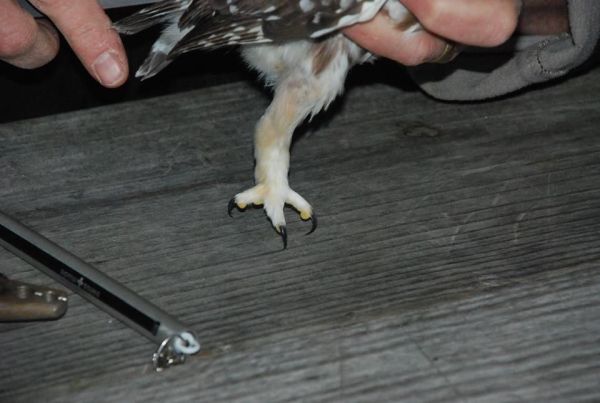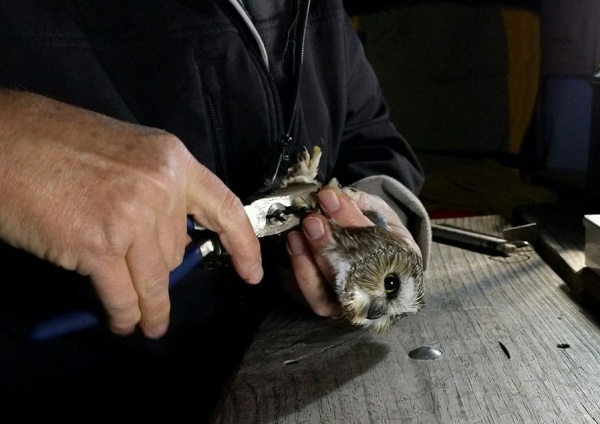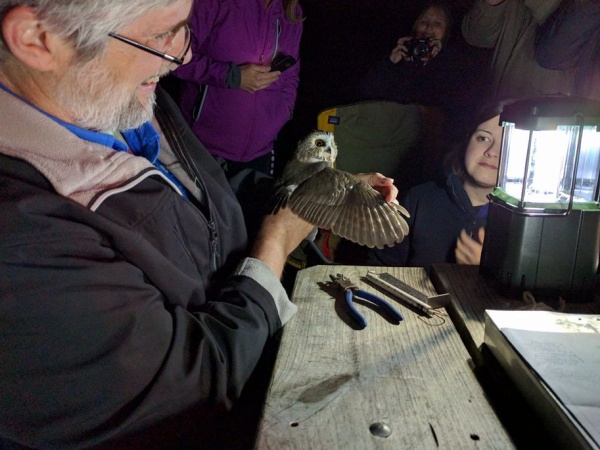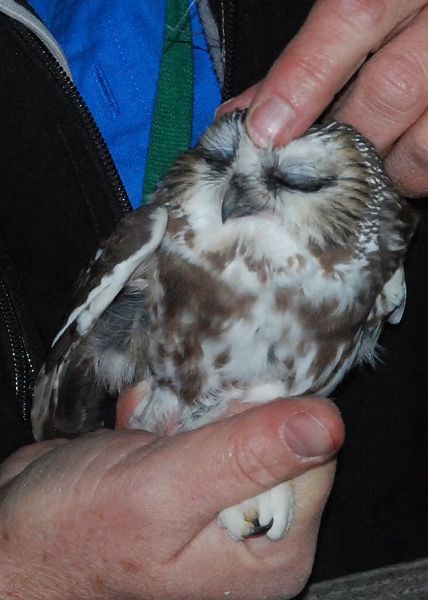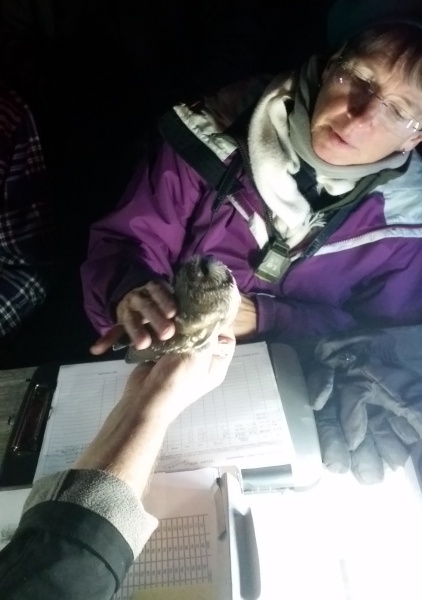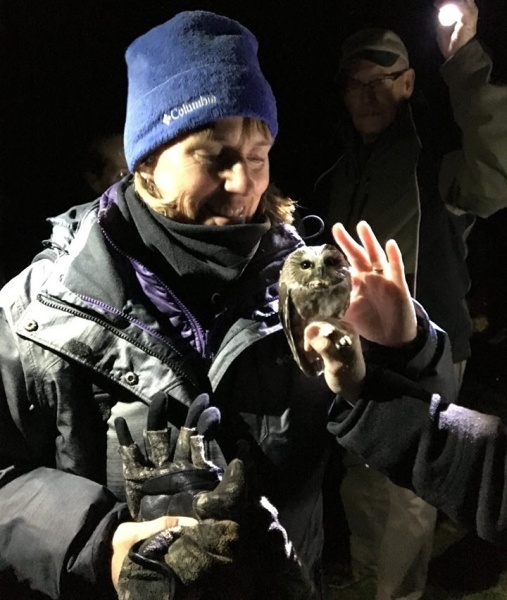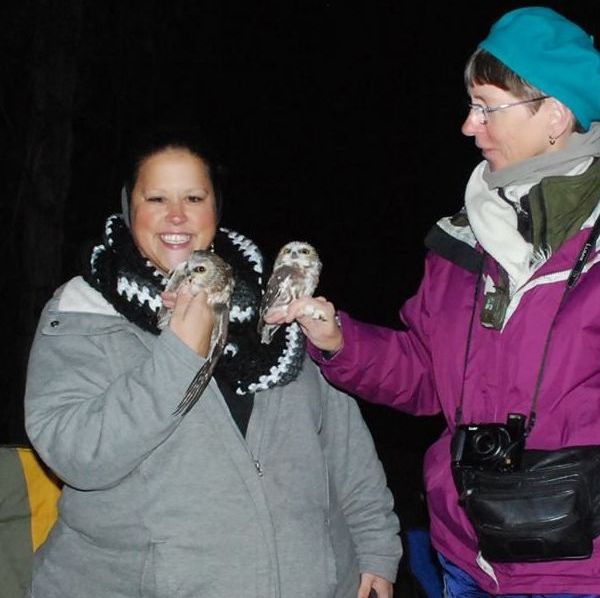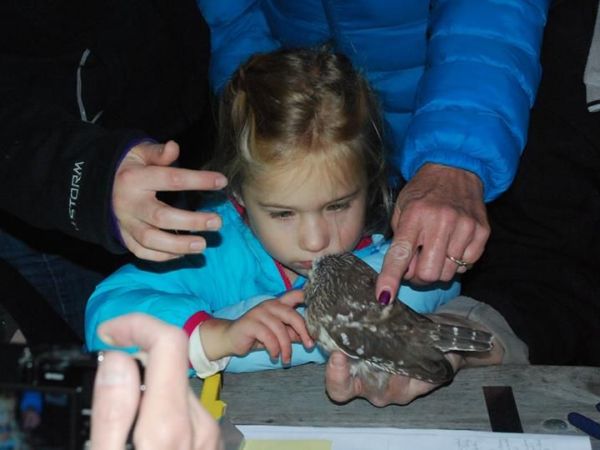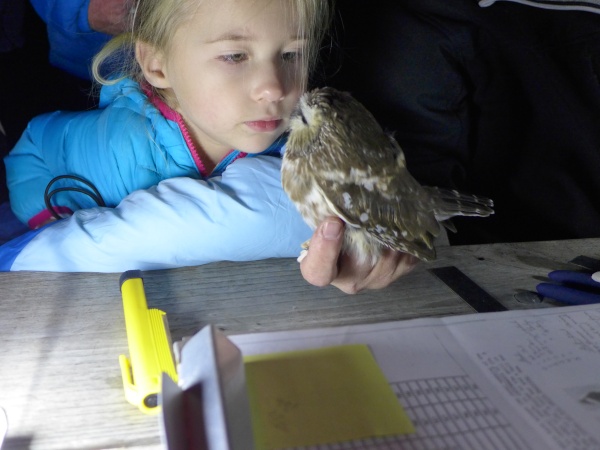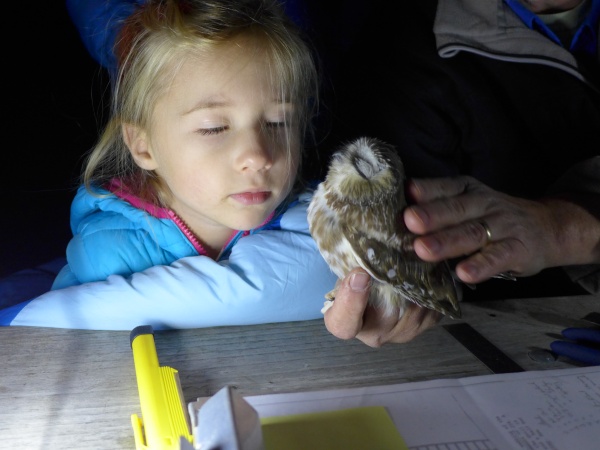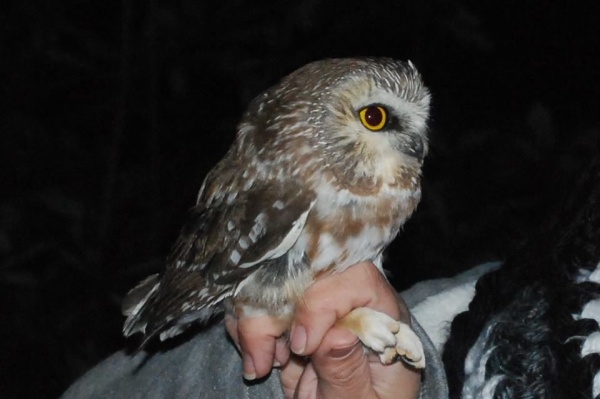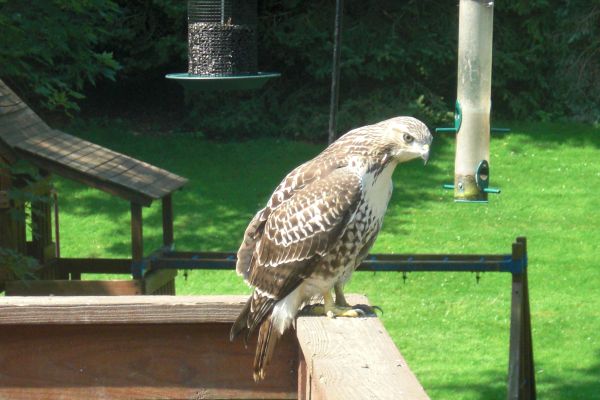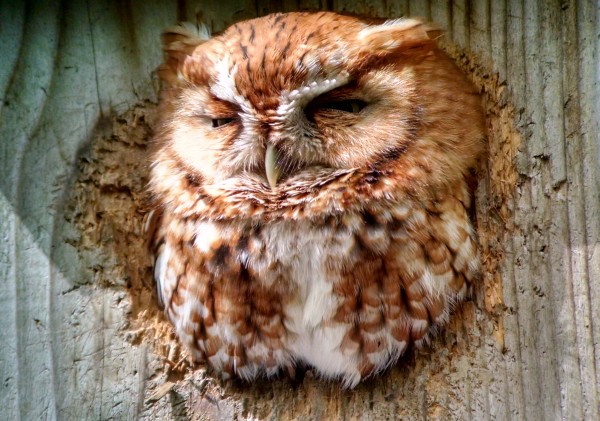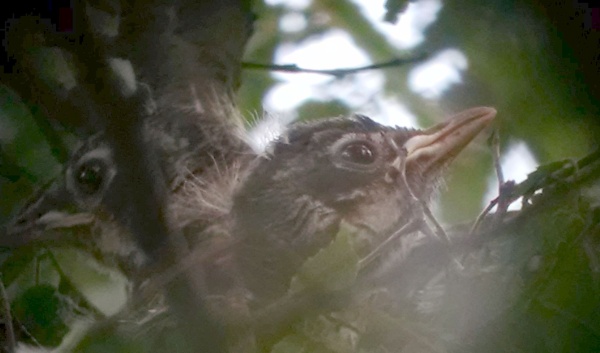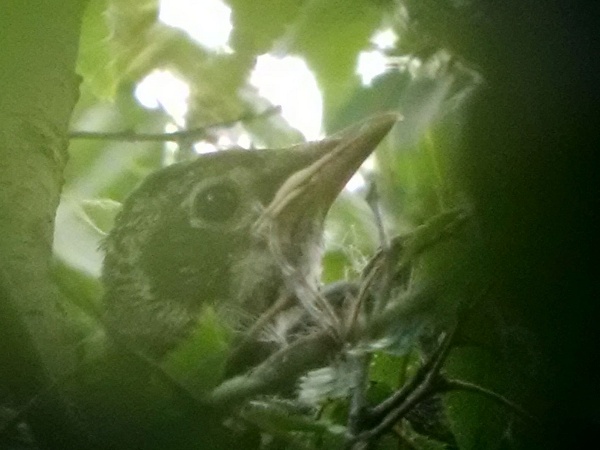
If you want to see golden eagles, now’s the time to visit the Allegheny Front Hawk Watch in Cairnbrook, PA. Five of us made the trip last Tuesday, November 1, and we weren’t disappointed. It was a 20-golden day.
Golden eagles (Aquila chrysaetos) migrate through Pennsylvania from late October through the end of November leaving their breeding grounds in northern Canada for wintering sites in the Appalachians from West Virginia to North Carolina.
Goldens fly almost daily during that period but you won’t see them at the Allegheny Front unless the wind has an eastward component that pushes them toward the Watch site. Tuesday’s forecast called for a south-southeast wind. Excellent!
Thanks to Donna Foyle and Anthony (Tony) Bruno I can show you what we saw.
Upon arrival the golden eagle statue greeted us at the parking lot.

Walking from the parking area to the mountain edge we could see it was hazy. Though everyone wasn’t present at the same time, the Hawk Watch had 11 observers and 55 visitors that day.

We all faced north, watching for raptors. Many red-tailed and sharp shinned hawks flew by since this is the height of their migration, too.

Sharp shins, small as they are, love to attack red-tailed hawks when they get the chance. Donna Foyle captured the action as this “sharpie” forced a juvenile red-tail to dive out of his way.

And there were golden eagles.
This gorgeous bird flew past low enough for us to see his golden head and nape. (Great shot, Tony!)

The white crescent under the wing is a sign that this golden eagle is immature.

And yes, it’s odd for so many humans to sit on the edge of a mountain. This eagle checked us out as he flew by. “What are all those humans doing?”

We had a great day at the Allegheny Front … and we happened to leave before the last 10 eagles flew by. (Golden eagles are famous for migrating in the last hour before sunset.)
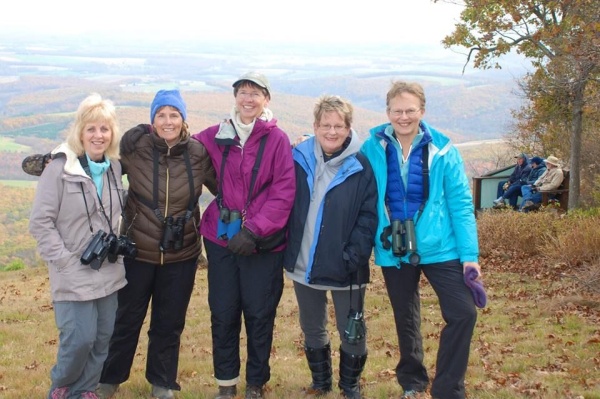
Visit the Allegheny Front Hawk Watch soon to see the golden eagles.
Directions and information: Allegheny Front Hawk Watch profile at hawkcount.org.
Before you go! Check the wind forecast at Weather Underground, Central City, PA forecast, scroll down to the 10-day forecast and choose the “Table” tab, then click on the day you’re planning to visit for the hourly wind forecast. Remember that a southeast wind is good. A northeast or east wind will bring fog.
(photos by Anthony Bruno and Donna Foyle. See the photo captions for credits)
